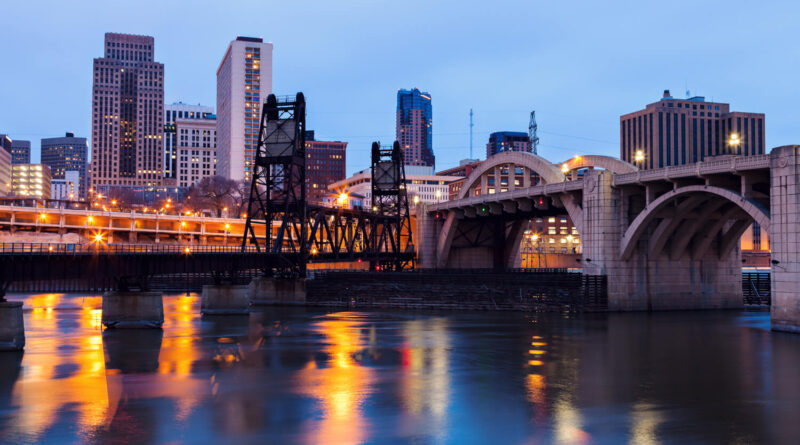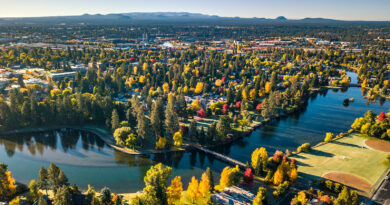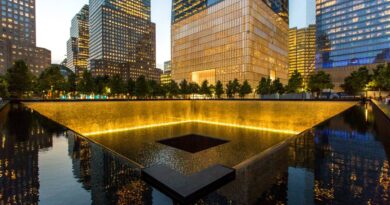History of Saint Paul Minnesota
Saint Paul, the capital city of Minnesota, is a place where history, culture, and modernity blend seamlessly. Nestled along the banks of the Mississippi River, Saint Paul is one half of the Twin Cities, with Minneapolis as its sibling. As the state capital, Saint Paul is not just a political hub; it is also a center for culture, education, and innovation. Known for its well-preserved historic architecture, vibrant arts scene, and diverse neighborhoods, Saint Paul offers residents and visitors alike a unique experience that is both rich in tradition and forward-looking in its ambitions.
Historical Background
The history of Saint Paul is deeply rooted in its geographic location along the Mississippi River, a vital waterway for trade and transportation. Long before European settlers arrived, the area was inhabited by the Dakota people, who had a rich cultural and spiritual connection to the land. The city’s modern history began in the early 19th century when French-Canadian fur traders established a settlement in the area, originally known as Pig’s Eye, named after a popular tavern run by Pierre “Pig’s Eye” Parrant.
In 1841, the settlement was renamed Saint Paul after the establishment of the first Catholic chapel dedicated to St. Paul the Apostle. The city grew rapidly as a center of commerce and trade, and in 1849, it was designated as the capital of the newly established Minnesota Territory. When Minnesota became a state in 1858, Saint Paul was chosen as the state capital, a status it retains to this day.
Over the years, Saint Paul has played a significant role in the development of Minnesota, serving as a focal point for political, economic, and cultural activities. The city’s history is reflected in its well-preserved architecture, historic landmarks, and numerous museums that chronicle its past.
Architecture and Landmarks
Saint Paul is renowned for its historic architecture, which ranges from grand public buildings to charming residential neighborhoods. The Minnesota State Capitol is one of the city’s most iconic landmarks. Designed by architect Cass Gilbert and completed in 1905, the Capitol building is an architectural masterpiece with its stunning white marble dome, intricately designed interiors, and beautiful artwork. Visitors can take guided tours to learn about the history and architecture of the building, as well as its role in Minnesota’s government.
Another architectural gem is the Cathedral of Saint Paul, one of the largest and most magnificent cathedrals in the United States. Constructed between 1906 and 1915, the cathedral is a prime example of Beaux-Arts architecture, with its grand dome, intricate mosaics, and beautiful stained glass windows. The cathedral is not only a place of worship but also a major cultural and historical landmark in the city.
The Landmark Center, a beautifully restored federal building that once served as a courthouse and post office, is now a cultural center that hosts exhibitions, performances, and public events. The building’s Romanesque Revival architecture, with its distinctive turrets and red granite facade, makes it a standout feature of downtown Saint Paul.
Cultural and Artistic Scene
Saint Paul is a city that embraces the arts, with a vibrant cultural scene that includes museums, galleries, theaters, and music venues. The Science Museum of Minnesota is a must-visit destination for families and science enthusiasts. The museum features interactive exhibits on a wide range of topics, from paleontology and anthropology to physics and environmental science. The museum’s Omnitheater offers immersive film experiences on a giant screen, making it a popular attraction for visitors of all ages.
For those interested in history, the Minnesota History Center offers a comprehensive look at the state’s past, with exhibits covering everything from Native American history to the industrial era. The center also hosts lectures, workshops, and special events that provide deeper insights into Minnesota’s cultural heritage.
The Ordway Center for the Performing Arts is a premier venue for music, theater, and dance in Saint Paul. The Ordway hosts a variety of performances, including Broadway shows, concerts by the Saint Paul Chamber Orchestra, and productions by the Minnesota Opera. The Fitzgerald Theater, named after the famous author F. Scott Fitzgerald, who was born in Saint Paul, is another key cultural venue, known for hosting live radio broadcasts, concerts, and literary events.
Parks and Outdoor Activities
Saint Paul is blessed with abundant green spaces and parks that offer a wide range of recreational activities. Como Park is one of the city’s most popular destinations, featuring a zoo, conservatory, golf course, and beautiful gardens. The Como Park Zoo and Conservatory is home to a variety of animals, including big cats, primates, and aquatic species, as well as tropical plants and flowers in the conservatory. The park also offers paddleboat rentals, picnic areas, and seasonal events like the Como Park Lantern Lighting Festival.
The Mississippi National River and Recreation Area runs through Saint Paul, offering scenic views of the river and opportunities for hiking, biking, and birdwatching. Lilydale Regional Park, located along the Mississippi River, is a favorite spot for fossil hunting, as well as hiking and fishing.
During the winter months, Saint Paul embraces the cold with a variety of winter sports and activities. Phalen Park offers ice skating, cross-country skiing, and ice fishing, while the Saint Paul Winter Carnival brings the city to life with ice sculptures, parades, and other festivities that celebrate the season.
Education and Institutions
Saint Paul is home to several respected educational institutions, including the University of St. Thomas and Macalester College. The University of St. Thomas, a private Catholic university, is known for its strong liberal arts programs and vibrant campus life. Macalester College, a highly regarded liberal arts college, is recognized for its commitment to internationalism and social justice, attracting students from around the world.
The city is also served by the Saint Paul Public Schools (SPPS) district, which offers a wide range of educational opportunities for students of all ages. SPPS operates numerous elementary, middle, and high schools, as well as specialized programs in areas such as the arts, science, and technology. Saint Paul’s public library system provides residents with access to books, digital resources, and educational programs, contributing to the city’s strong emphasis on learning and community engagement.
Saint Paul’s Food Scene
Saint Paul’s food scene is as diverse as its population, offering a wide range of culinary experiences that reflect the city’s multicultural heritage. From traditional Midwestern comfort food to international cuisine, there’s something to satisfy every palate.
The city is known for its iconic dishes, such as the Juicy Lucy, a cheese-stuffed burger that has become a local favorite. Several restaurants in Saint Paul claim to have invented the Juicy Lucy, but The Nook and Shamrocks are two of the most popular spots to try this delicious creation.
For a taste of authentic Hmong cuisine, visit Hmongtown Marketplace or Hmong Village, where you can sample dishes like pho (Vietnamese noodle soup), papaya salad, and sticky rice. Saint Paul has a large Hmong population, and these markets offer a glimpse into the vibrant food culture of this community.
The city is also home to a number of farm-to-table restaurants that emphasize fresh, locally sourced ingredients. Heartland Restaurant & Wine Bar and The Strip Club Meat & Fish are two popular spots that showcase the best of Minnesota’s agricultural bounty.
Shopping and Local Markets
Saint Paul offers a variety of shopping experiences, from local boutiques and specialty stores to bustling farmers markets. The Grand Avenue area is known for its charming shops, offering everything from unique clothing and accessories to handmade crafts and home goods. Patina and Grand Hand Gallery are two popular stops for finding distinctive gifts and art.
The Saint Paul Farmers Market is a beloved local institution, offering fresh produce, flowers, baked goods, and artisanal products. The market operates year-round, with a focus on locally grown and produced items. It’s a great place to meet local farmers and producers while enjoying the vibrant community atmosphere.
In addition to traditional shopping, Saint Paul is home to a number of specialty stores that cater to specific interests. Midway Bookstore, for example, is a treasure trove for book lovers, offering a vast selection of rare and used books. Ingebretsen’s Nordic Marketplace is another unique destination, specializing in Scandinavian goods, including food, clothing, and crafts.
Neighborhoods of Saint Paul
Saint Paul is a city of distinct neighborhoods, each with its own character and charm. Summit Hill is one of the most historic and affluent neighborhoods, known for its grand Victorian homes, tree-lined streets, and proximity to Summit Avenue, which is home to the Governor’s Residence and several other historic mansions.
Lowertown is a vibrant neighborhood that has undergone significant revitalization in recent years, transforming from an industrial area into a hub for artists, young professionals, and food enthusiasts. The area is known for its loft-style apartments, art galleries, and trendy restaurants. Mears Park, located in the heart of Lowertown, is a popular spot for outdoor concerts and festivals.
Highland Park is a family-friendly neighborhood with a mix of residential areas, parks, and shopping districts. The neighborhood’s centerpiece is Highland National Golf Course, a beautiful 18-hole course that offers scenic views and challenging play.
Other notable neighborhoods include West Seventh, known for its historic charm and proximity to the Mississippi River, and Frogtown, a diverse area with a rich cultural heritage and a strong sense of community.
Festivals and Events
Saint Paul is a city that loves to celebrate, with a calendar full of festivals and events that bring the community together. The Saint Paul Winter Carnival is one of the city’s most famous events, held annually in late January and early February. The carnival features ice sculptures, parades, and a variety of winter activities that embrace the cold weather with enthusiasm.
Another major event is the Minnesota State Fair, held just outside of Saint Paul in Falcon Heights. The State Fair is one of the largest in the United States, attracting visitors from all over the region to enjoy agricultural exhibits, live music, and a wide array of food, including the famous Sweet Martha’s Cookies and Pronto Pups.
Other popular events include the Irish Fair of Minnesota, the Hmong New Year Celebration, and the Twin Cities Jazz Festival. These events reflect the diverse cultural makeup of Saint Paul and offer opportunities for residents and visitors to experience the city’s rich traditions and vibrant community life.
Transportation and Accessibility
Saint Paul is well-connected, making it easy for residents and visitors to get around the city and beyond. The city’s public transportation system, operated by Metro Transit, includes bus routes and light rail service. The METRO Green Line connects downtown Saint Paul to downtown Minneapolis, making it convenient for commuters and tourists to travel between the Twin Cities.
For those who prefer to explore on foot or by bike, Saint Paul offers a network of trails and bike lanes that make it a pedestrian- and cyclist-friendly city. The Mississippi River Trail and the Grand Rounds National Scenic Byway are popular routes for outdoor enthusiasts.
Saint Paul is also served by Minneapolis-Saint Paul International Airport (MSP), located just a short drive from the city. The airport offers domestic and international flights, making it a convenient gateway for travelers.
Saint Paul’s Role in Politics and Government
As the capital of Minnesota, Saint Paul is the center of state government and politics. The Minnesota State Capitol is the seat of the state’s legislative and executive branches, housing the offices of the Governor, the Minnesota Legislature, and the Minnesota Supreme Court. The Capitol building is not only a place of governance but also a symbol of Minnesota’s democratic values and history.
In addition to its role in state government, Saint Paul is home to numerous government agencies, advocacy organizations, and nonprofit groups that influence policy and social issues both locally and nationally. The city’s political landscape is shaped by its diverse population and its commitment to social justice, education, and economic development.
Economy and Business Environment
Saint Paul has a diverse and growing economy, with key industries including healthcare, education, finance, and manufacturing. The city is home to several major employers, including Ecolab, Securian Financial Group, and 3M, which has its headquarters in nearby Maplewood.
The healthcare sector is particularly strong in Saint Paul, with several major hospitals and healthcare providers, including Regions Hospital and Gillette Children’s Specialty Healthcare. Education is another major economic driver, with the city’s universities and colleges attracting students and faculty from around the world.
Saint Paul’s economy is also supported by a thriving small business community, with numerous local entrepreneurs and startups contributing to the city’s dynamic business environment. The city’s commitment to innovation and sustainability has positioned it as a leader in the green economy, with initiatives aimed at reducing carbon emissions, promoting renewable energy, and supporting green businesses.
Notable Residents and Historical Figures
Saint Paul has been home to many notable residents and historical figures who have made significant contributions to the city and beyond. F. Scott Fitzgerald, the celebrated author of “The Great Gatsby,” was born in Saint Paul and spent much of his early life in the city. His experiences in Saint Paul are reflected in his literary works, which capture the spirit of the Jazz Age.
Another prominent figure is Hubert H. Humphrey, who served as Vice President of the United States under President Lyndon B. Johnson. Humphrey was a key figure in the civil rights movement and played a significant role in the passage of the Civil Rights Act of 1964.
Saint Paul has also produced several notable athletes, including Joe Mauer, a former Major League Baseball player for the Minnesota Twins, and Paul Molitor, a Hall of Fame baseball player who also played for the Twins. These individuals have brought recognition and pride to Saint Paul through their achievements in sports and public service.
Sports and Recreation
Saint Paul is a sports-loving city, with a variety of teams and recreational activities that bring the community together. The Minnesota Wild, the state’s professional hockey team, plays its home games at the Xcel Energy Center in downtown Saint Paul. The Wild have a passionate fan base, and attending a game is a must for any hockey enthusiast.
Baseball fans can catch a game with the Saint Paul Saints, a minor league team that plays at CHS Field in Lowertown. The Saints are known for their fun, family-friendly atmosphere and entertaining promotions, making their games a popular outing for residents and visitors alike.
In addition to professional sports, Saint Paul offers a wide range of recreational activities, including golf, tennis, and boating. The city’s parks and trails provide ample opportunities for outdoor activities, whether you’re looking to hike, bike, or simply enjoy the natural beauty of the area.
Future Outlook for Saint Paul
Saint Paul is a city with a bright future, driven by a commitment to innovation, sustainability, and community engagement. As the city continues to grow and evolve, it faces both opportunities and challenges in areas such as housing, transportation, and economic development.
One of the key challenges for Saint Paul is ensuring that growth is equitable and inclusive, providing opportunities for all residents to thrive. The city’s leaders are focused on addressing issues such as affordable housing, economic disparities, and environmental sustainability, while also promoting cultural diversity and community engagement.
Looking ahead, Saint Paul is poised to remain a vibrant and dynamic city that embraces its rich history while looking forward to a future of continued growth and innovation. With its strong sense of community, commitment to education and the arts, and dedication to sustainability, Saint Paul is well-positioned to be a leading city in the 21st century.
Conclusion
Saint Paul, Minnesota, is a city that offers a unique blend of history, culture, and modern living. From its historic landmarks and vibrant arts scene to its diverse neighborhoods and strong sense of community, Saint Paul is a place where tradition meets innovation. Whether you’re exploring its architectural treasures, enjoying its parks and outdoor activities, or immersing yourself in its cultural offerings, Saint Paul has something for everyone. As the capital of Minnesota, Saint Paul plays a vital role in the state’s political, economic, and cultural life, making it a city that is both rich in heritage and full of promise for the future.
FAQs
What is Saint Paul known for?
Saint Paul is known for being the capital of Minnesota, its rich history, well-preserved architecture, vibrant arts scene, and strong sense of community.
How did Saint Paul get its name?
Saint Paul was named after the first Catholic chapel established in the area, which was dedicated to St. Paul the Apostle.
What are the best attractions in Saint Paul?
Some of the best attractions in Saint Paul include the Minnesota State Capitol, the Cathedral of Saint Paul, Como Park and Zoo, and the Science Museum of Minnesota.
What is the population of Saint Paul?
As of the latest estimates, Saint Paul has a population of approximately 311,000 people, making it the second-largest city in Minnesota.
What are the best neighborhoods to live in Saint Paul?
Some of the best neighborhoods in Saint Paul include Summit Hill, Lowertown, Highland Park, and West Seventh.
How has Saint Paul changed over the years?
Saint Paul has evolved from a small trading post to a vibrant and diverse capital city, with significant growth in its economy, arts scene, and cultural diversity.
Discover more from City Towner
Subscribe to get the latest posts sent to your email.




